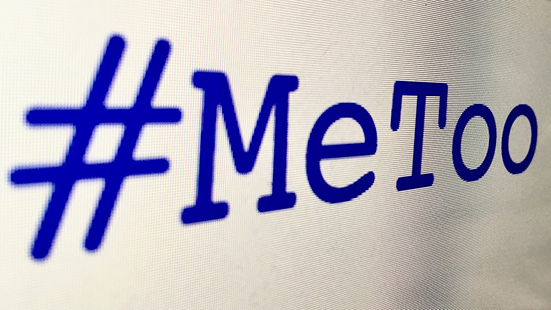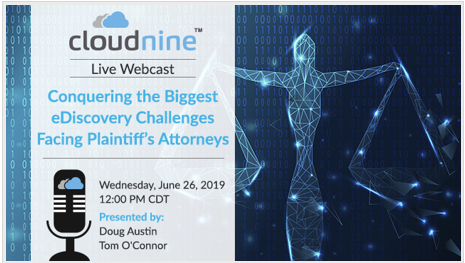Discovery “Cautionary Tale” Leads to Recommendations of Default Judgment Against Defendants: eDiscovery Case Law
In Abbott Laboratories, et al. v. Adelphia Supply USA, et al., No. 15 CV 5826 (CBA) (LB) (E.D.N.Y. May 2, 2019), New York Magistrate Judge Lois Bloom, noting that the plaintiff’s motion for case ending sanctions against H&H Wholesale Services, Inc., its principal, Howard Goldman, and its marketing manager and Mr. Goldman’s wife, Lori Goldman (“H&H Defendants”) for wide-scale discovery misconduct “presents a cautionary tale about how not to conduct discovery in federal court” recommended that the plaintiffs’ motion be granted, and that the Court should enter a default judgment against the H&H Defendants.
This case (covered here by Law360, subscription required; report and recommendation linked here) involves trademark and trade dress infringement, unfair competition, trademark dilution and other claims associated with the illegal sale of Abbott’s FreeStyle blood glucose test strips in the US. Judge Bloom began the report and recommendations document with this statement:
“This motion presents a cautionary tale about how not to conduct discovery in federal court.”
Among the discovery issues according to Judge Bloom (and plaintiff allegations):
- The documents the H&H defendants originally produced were printed “in hard copy, scanning them all together, and producing them as a single, 1941-page PDF file”;
- H&H used search terms it knew wouldn’t turn up results (“such as ‘International’ and ‘FreeStyle,’ whereas H&H’s internal systems used item numbers and other abbreviations such as ‘INT’ and ‘INTE’ for International and ‘FRL’ and ‘FSL’ for FreeStyle”) and specifically removed other damning documents – particularly those involving Howard Goldman and Lori Goldman – and provided numerous false excuses for these omissions;
- The testimony from H&H’s general manager regarding the discovery woes was “clearly inconsistent if not perjured from his deposition” opposing the sanctions motion, Howard Goldman’s testimony was “evasive and self-serving at best” and H&H’s corporate representative’s testimony was “clearly perjured”;
- “H&H would have gotten away” with its fraud if not for Abbott being allowed to seize H&H’s computers as part of a related counterfeiting case, which allowed previously withheld documents to come to light.
“H&H only complied with the court’s orders and their discovery obligations when their backs were against the wall,” Judge Bloom wrote. “Their email server had been seized. There was no longer an escape from responsibility for their bad faith conduct … But for being caught in a web of irrefutable evidence, H&H would have profited from their misconduct.”
She added that the lies were part of a “calculated pattern of pervasive misconduct that started early on and continued even after defendants were caught red handed,” meaning the case must be ended with a victory handed to Abbott.
H&H had previously been sanctioned for its discovery misconduct, with Judge Bloom in 2018 blocking the supplier from raising attorney-client or work-product privilege defenses for a certain set of discovery production.
Even other companies that Abbott had also sued had gone after H&H and Kerr Russell for letting Goldman listen to remote depositions of other parties, in violation of a protective order.
In recommending that the plaintiffs’ motion for sanctions be granted and a default judgment being issued against the H&H defendants, Judge Bloom stated:
“The Court finds that the H&H defendants have committed a fraud upon the court, and that the harshest sanction is warranted. Therefore, plaintiffs’ motion for sanctions should be granted and a default judgment should be entered against H&H Wholesale Services, Inc., Howard Goldman, and Lori Goldman.”
So, what do you think? Do you agree with the harsh sanction recommendations? Please let us know if any comments you might have or if you’d like to know more about a particular topic.

Sponsor: This blog is sponsored by CloudNine, which is a data and legal discovery technology company with proven expertise in simplifying and automating the discovery of data for audits, investigations, and litigation. Used by legal and business customers worldwide including more than 50 of the top 250 Am Law firms and many of the world’s leading corporations, CloudNine’s eDiscovery automation software and services help customers gain insight and intelligence on electronic data.
Disclaimer: The views represented herein are exclusively the views of the author, and do not necessarily represent the views held by CloudNine. eDiscovery Daily is made available by CloudNine solely for educational purposes to provide general information about general eDiscovery principles and not to provide specific legal advice applicable to any particular circumstance. eDiscovery Daily should not be used as a substitute for competent legal advice from a lawyer you have retained and who has agreed to represent you.










